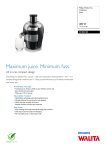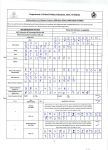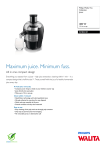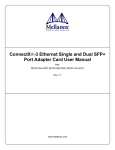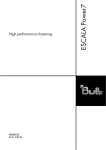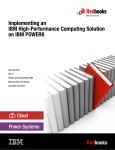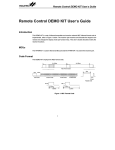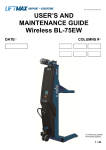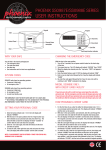Download TROUBLESHOOTING BASIC OPERATION
Transcript
ADDITIONAL INSTRUCTIONS SAMPLING TIPS • • • • • • • • • • Avoid damaging card label and sampling paper. Cards need to be removed immediately after analysis. Cards are not reusable. Carefully follow card label instructions for sampling procedure. Swiping requires fair amount of pressure applied to be fully effective. Powderize crystals (e.g. crack cocaine or ammonium nitrate prill) by grinding a grain-of-sand-sized sample with the sampling paper. Remove excess powder by shaking it off or tapping card once. Avoid collecting excess dust or dirt, as this can interfere with detection processing. For liquids, apply small drop on sampling paper (with cotton swab, eye dropper, etc.) Allow liquid to dry slightly. Avoid damaging card label when sampling. CLEANING Clean the inside of card carrier with cleaning accessory. Clean as needed or at a minimum of every 20 samples. Refer to cleaning accessory packaging instructions. NOTE: Avoid contact between swab and internal parts of the unit other than card carrier. VERIFYING UNIT The cards and unit may be verified to ensure proper performance. For negative detection for each card type, analyze new (unused) sampling card (green “NOT DETECTED” light should come on). For positive detection use the verification system provided with your unit. Follow the instructions included in the verification system packaging. If results differ, call technical support at +49 - 4102 - 800 90. BASIC OPERATION TROUBLESHOOTING 1. Press POWER button (release when A detection cycle does not begin when door is closed Card Check for damage to switch or card bump (detection triggering mechanism). Fully insert card into carrier and close door firmly. Make sure unit is fully powered on (power button should be on and not blinking). it lights, WAIT until blinking stops) 2. Collect sample and insert card (press both latches to pull door open) Both “DETECTED” and “NOT DETECTED” lights turn solid yellow a few seconds after starting a detection cycle (indicates the card label was not recognized) Try a new card making sure label isn’t dirty, damaged or peeling. Close door firmly in a swift singular motion. Make sure card type is supported by firmware version. Both “DETECTED” and “NOT DETECTED” lights blink yellow (indicates a system error requiring manual reset) Perform a manual reset: Hold power button down for 15 sec, release, wait 10 sec, then power unit on. Try a new card. Unit does not turn on or a detection result is not returned after 3 minutes (may indicate system computer is busy) Perform a manual reset: Hold power button down for 15 sec, release, wait 10 sec, then power unit on. Do not attempt to power on within 15 seconds after powering off. Note: Ensure battery has not drained (plug unit in and power on). Detected LED Not Detected LED Power Button Battery Status Positive detection (analysis completed) Processing Powering up Low (firmly) No detection (analysis completed) For technical support, to place orders, obtain sampling card MSDSs and for firmware upgrades contact: ulti med Products (Deutschland) GmbH Reeshoop 1, 22926 Ahrensburg GERMANY [email protected] • www.ultimed.org Ready Charging* Charging complete* The XCAT is used for presumptive field testing. Field conditions and sampling efficiency can affect results. TECHNICAL SUPPORT AND ORDERING 3. Close card door INDICATOR KEY Card error Green ON Yellow ON Red ON Yellow blink System error * Indicators will light only when unit is powered on and plugged in. Unit will still charge in power-off state. 5. Check indicators for result Door latch Plug cover 4. Wait until “NOT DETECTED” LED stops blinking (see chart) 6. Remove card (place in original bag for protection) NOTE: To power off, hold Power Button until light goes off. Do not touch card’s paper portion after analysis. TAKING SAMPLES ANALYZING SAMPLES NOTE: Do not touch sampling paper with your hand. Make sure crystals are powderized. Shake off excess/loose powder. a) direct method - grinding (grinding the card’s sampling paper directly into the sampled surface) CARD EDGES GUNSHOT RESIDUE (GSR) sampling procedure: The GSR sampling card can be used to sample hands, clothes or surfaces. Follow STEPS as shown. NOTE: Do not sample wet hands or surfaces, blood, or materials containing red particles (e.g. fibers). Do not contact sampling paper or adhesive with your own hands. b) direct method - swiping* c) indirect method (use (hand or surface swipe) STEP 2 (see reverse) STEP 1 Plain paper for swiping When sampling hands inform subject you will be applying a very firm pressure with the sampling card. cotton swab or glove) GSR contamination is typically concentrated in the blue areas shown. After collection, analyze sample using the XCAT. 1. Remove the protective liner. NOTE: Make sure unit is on before conducting analysis. a. 1. Open door and slide card into carrier channels (paper down, label facing towards unit) 2. DAB tacky adhesive strip over areas marked in blue, beginning with back of hand, then webbing between thumb and forefinger, then palm. NOTE: Dab hand a minimum of 50 times. 3. Next SWIPE the same areas using paper portion. Card carrier channels Back Palm Dab first using tacky strip then swipe with paper 4. Lift the red tab and fold adhesive onto sampling paper. Press Pull Press 6. While still pressing on * Swipe must be FIRM. Not all cards may be used for hand sampling; check card label. If card has protruding bottom edge, use that edge for swiping. Avoid excess dirt on sampling paper. b. 2. Firmly close door to start detection process (leave unit positioned upright while processing) NOTE: Remove card immediately after analysis. Card is not reusable. WARNINGS 5. Press adhesive to paper firmly with thumb (to prevent tearing). Then pull red tab to fully extend liner. NOTE: Certain cards may not be supported by your XCAT’s currently installed firmware option. Firmware is upgradable. 1 : EP ple ST t samesive ec h e d Coll ab a swip d en 2 th EP e) ST revers e (se Protruding edge or Recessed edge Collect sample: dab adhesive,then swipe Tacky adhesive for dabbing STEPS for GSR sample collection and analysis: 1 : EP ple ST sam sive ect dhe e Coll ab a swip d en 2 th E P e) ST revers e (se EXPLOSIVES or NARCOTICS sampling methods (follow label instructions on each card type): adhesive, tightly wrap the liner around the sampling card. Analyze in XCAT, then repeat these steps on the other hand with another card. Wrap • Tampering will void any warranty and may affect performance (do not break seal) • Cards must be stored properly for accuracy (see box label) • Do not operate near ignition sources or while smoking • Use in a well-ventilated area • Do not operate if housing is removed or damaged • Do not allow water to enter unit • Do not touch sample paper on processed cards • Maximum operating temperature is 120 ºF • Do not expose battery to flame or temperatures above 130 ºF • Refer to Sampling Card MSDSs for safety information. © 2015 RedXDefense | v 26



